Register now to join Ufos Travel and make travel friends around the world
Login to follow friends and send messages. No Account? Register
×
The 2024 ginkgo season is coming. Kyoto, Osaka, Nara and Hyogo in Kansai all have magnificent ginkgo attractions. The following are the 13 most popular ginkgo attractions: Kyoto has Nishi-Honganji Temple and Higashi-Honganji Temple, and the golden colors on both sides have their own flavors; Kyoto Gyoen National Garden and Nara's Kasuga Taisha Shrine can both see red leaves and ginkgo at the same time; Osaka's Midosuji Ginkgo Avenue stretches for 4 kilometers and is quite impressive; Hyogo recommends going to Arima Onsen to enjoy the ginkgo while soaking!

Kyoto
Nishi Honganji Temple
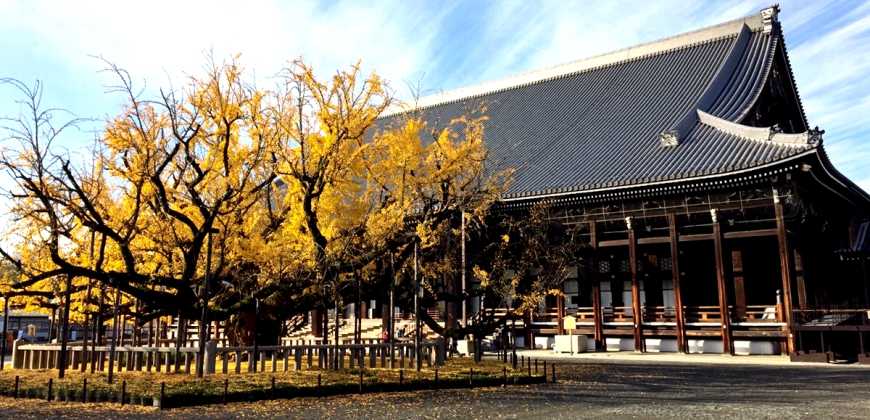
Ginkgo trees are not only beautiful and elegant, but sometimes they can also have a lot of "individuality". Located in Nishi Honganji Temple, there is a giant ginkgo tree called the "reverse ginkgo" (逆さ銀杏), which is nearly 400 years old. Because its growth direction is opposite to that of ordinary ginkgo trees, its branches, like roots, extend as far out as possible, as if trying to support the entire sky. In addition to its special shape, there is also a legend: once a fire broke out in Nishi Honganji Temple, this ginkgo tree actually sprayed water to put out the fire, saving the temple from crisis, so it is also called the "water-sprinkling ginkgo" (水吹き銀杏). How can Travelers miss such a story-filled ginkgo tree?


Nishi Honganji
・Address: Hanayacho, Horikawa-dori, Shimogyo-ku, Kyoto
・Ginkgo season: Late November to early December
・Prayer time: 5:30-17:00
・Access: Take the city bus and get off at "Nishi Honganji-mae", "Shimabara-guchi" or "Nanajo Horikawa"
・Official website
Higashi Honganji


Higashi Honganji, about a 7-minute walk from Kyoto Station, is the headquarters of the Shinshu Otani sect of the Pure Land Shin religion. The official name is the Shinshu main temple. It is also a famous temple with a history of more than 400 years. However, it suffered from severe disasters during the Edo period. After the 4th Zhurong disaster, the current main body was built during the Meiji period. Even though the fate is a bit unfortunate, in autumn, the golden ginkgo avenue still makes the temple beautiful and elegant, and the ginkgo trees peeking out from the ancient ruins are full of poetry.
Higashi Honganji Temple.
・Address: Karasuma-dori Shichijo, Shimogyo-ku, Kyoto City
・Ginkgo season: early November to late November
・Prayer time: 5:50-17:30 from March to October / 6: 20~16:30
・Transportation: JR "Kyoto" Station, about 7 minutes on foot / Subway "Gojo" Station, about 5 minutes on foot / City bus "Karasuma Nanajo" Station, about 1 minute on foot
・Official website
Shinseien Autumn Light-up.
・Date: November 16, 2024 - December 15, 2024
・Time: 17:30 - 21:30 (last admission 21:00)
・Admission: Adults 1,000 yen / Junior high and high school students 500 yen for students and 500 yen for elementary school students and younger.
・2024 Autumn Lighting Event Website.
Kyoto Imperial Garden


Although Kyoto Gyoen has the word "御" in its name, it was also the royal land of the royal family in the past. Now it is a relaxing place for Kyoto citizens to use in their daily lives. It covers an area of about 65 hectares. It not only preserves many historical sites, but also plants more than 500 species of plants. In autumn, in addition to the red maple leaves, a large ginkgo tree near the Inui-gomon Gate is also in full bloom. It is like a long-time friend of Kyoto citizens. They meet again in the good autumn season every year. Although it may not be as spectacular as the red leaves all over the city, it makes people feel particularly warm.
Kyoto Gyoen National Garden
・Address: Kyoto Gyoen National Garden, Kamigyo-ku, Kyoto City, Kyoto Prefecture
・Ginkgo season: Early November to early December
・Access: 5-minute walk from the subway Marutamachi Station or Imadegawa Station
・Official website
Bukoji Temple

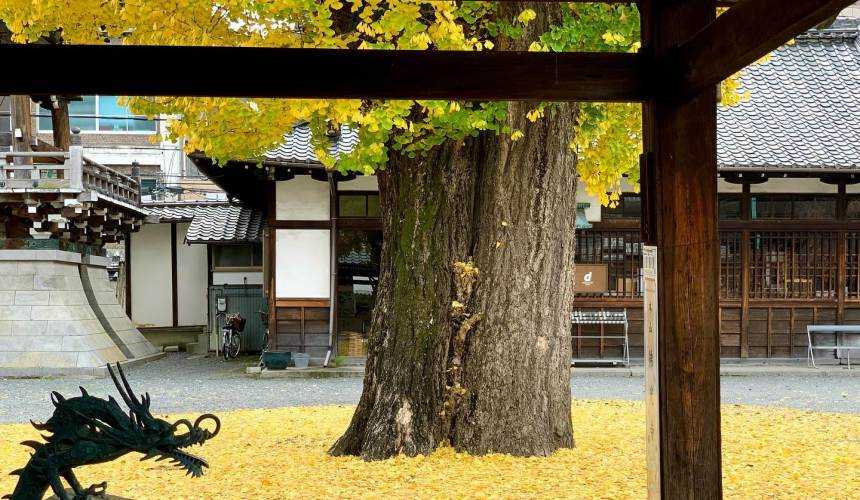
Kyoto Bukoji Temple is located near the bustling Kawaramachi Shijo. It is said to have been founded in 1212 by the founder of the Pure Land Buddhism, Shinto Shonin, who was pardoned from exile in Echigo. It is abbreviated from "Amida Bukoji Temple" and is now called "Bukoji Temple". The temple was burned down during the Onin War, but was gradually restored and became the temple it is today, consisting of buildings from different periods. There is a huge ginkgo tree planted in front of the Amida Hall, which is called "the ginkgo of Bukoji Temple". In late autumn, the fallen ginkgo leaves cover the ground like a golden carpet, and are often arranged into a heart shape by Tourists. Although there are not as many tourists here as in Higashi-Honganji and Nishi-Honganji, it is this tranquility that attracts many people to stroll here and savor the beauty of autumn.
Honzan Bukoji Temple
・Address: 397 Shinkai-cho, Shimogyo-ku, Kyoto City
・Ginkgo season: late November to early December
・Access: 5 minutes on foot from Hankyu Railway Karasuma Station
・Official website
Imamiya Shrine
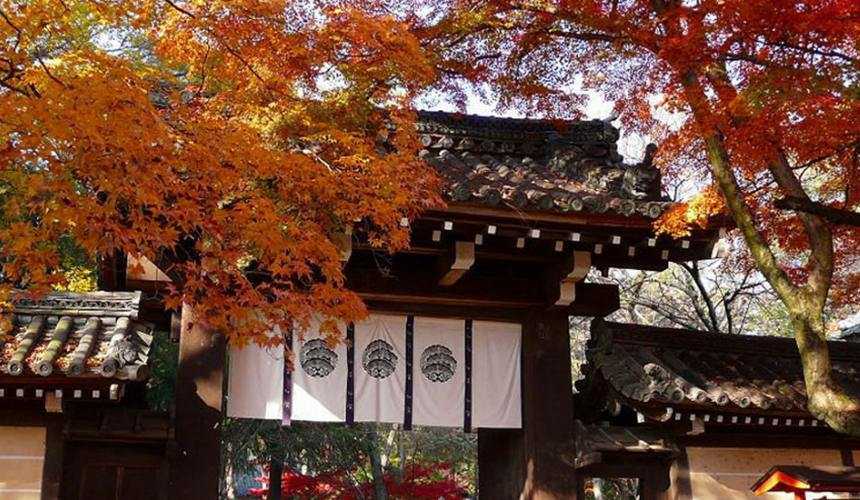

"Imamiya Shrine" has a history of a thousand years since it was built in 994. As early as before the capital was moved in the Heian period, Emperor Ichijo built it to eliminate the epidemic rampant in Kyoto. Later, because it received the mikoshi from Toyotomi Hideyoshi, it was known as "Jade Mikoshi", which means that women can marry into a wealthy family, attracting many people to pray for marriage. There is a whole row of ginkgo and red leaves at the entrance. Every autumn, it is poetic and picturesque, adding a romantic atmosphere to the good men and women who come to pray for love!
Imamiya Shrine
・Address: 21 Murasaki Imamiya-cho, Kita-ku, Kyoto City, Kyoto Prefecture
・Ginkgo season: mid-November to late November
・Access: Take the 46 city bus from Hankyu Railway "Kawaramachi Station" or Keihan "Shijo Station" and get off at "Imamiya-jinja-mae"
・Official website
Misui Shrine

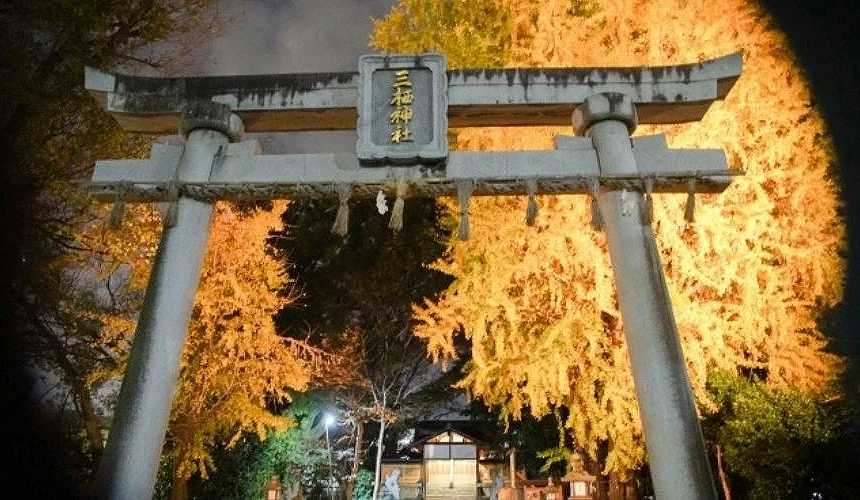
Located in Fushimi District, Kyoto, Misu Shrine is an ancient shrine with a history dating back to the Asuka period. It enshrines three gods, Emperor Tenmu, Izanagi Okami, and Emperor Ojin. The ginkgo tree in the shrine was designated as a preserved tree in Kyoto City in 2006, and it is an advanced hidden attraction for admiring ginkgo. When the ginkgo leaves begin to fall, the shrine grounds seem to be covered with a golden carpet, adding to the solemn and magnificent atmosphere of the shrine. Every year, many tourists come here to pray for good luck and take beautiful photos of ginkgo!
Misu Shrine
・Address: 83, Shimo-Sansu-jo-no-mae-cho, Yoko-oji, Fushimi-ku, Kyoto
・Ginkgo season: Early December to mid-December
・Access: Get off at "Chushojima" on the Keihan Railway and walk for 25 minutes, or take the city bus "Yokoo-oji Shaku-mae Yuki" (19, 20, 22, 81, South 3, South 5 lines) and get off at "Shimo-Sansu"
・Official website
Horikawa Ginkgo Avenue

"Hori-kawa Ginkgo Avenue" is located on Horikawa-dori, which is about 1 km long and runs from Imadegawa-dori to Shimei-dori. It is a favorite private ginkgo attraction for Kyoto locals. There are about 70 ginkgo trees planted along the entire stretch. In late autumn, the ginkgo trees shine with golden light under the sunlight. In addition, the S-shaped bend in the middle of the road is dazzling, just like a golden dragon lying in the middle of the road. It is extraordinary and pleasing to the eye!


Horikawa-dori
・Address: Horikawa-dori (from Imadegawa-dori to Shimei-dori)
・Ginkgo season: Early November to late November
・Access: 10-minute walk from Imadegawa Station on the Karasuma Line
・Ginkgo introduction website
Osaka
Osaka Castle Park


For travelers visiting Osaka, whether they are interested in history or not, it is worth visiting Osaka Castle Park. Because if you like history, you can visit Osaka Castle to see the Otemon Gate, the Senkan Turret, the Yanoku Warehouse, and other historical sites designated as national important cultural properties. If you want to completely relax, enjoy the beautiful scenery, and take beautiful photos, Osaka Castle Park can definitely satisfy your wishes! In autumn, there is a ginkgo avenue about one kilometer long on the east side of the park. When walking along it, you can not only feel the soft touch of the ginkgo trees under your feet like a carpet, but also see a yellow color everywhere. You can also take beautiful photos of the castle tower and ginkgo trees. It is a photography spot that you absolutely cannot miss.
Osaka Castle Park
・Address: Osaka Castle, Chuo-ku, Osaka City, Osaka Prefecture
・Ginkgo season: mid-November to early December
・Business hours: 9:00-17:00 at the castle tower
・Access: JR "Osaka Castle Park" Station, "Mori-no-Miya" Station / Osaka Municipal Subway "Tanimachi 4-chome" Station, "Mori-no-Miya" Station, about a 20-minute walk
・Official website
Midosuji Ginkgo Avenue


The beautiful scenery of being in nature and retaining its original breath is certainly fascinating, but sometimes in the bustling metropolis, the elegant scenery that you encounter at a turn is often more amazing and impressive. In the city of Osaka in autumn, the most stunning place is the Ginkgo Avenue in Midosuji. There are more than 800 ginkgo trees planted on the approximately 4-kilometer road from Yodoyabashi to Namba. Every year when the leaves turn red and yellow, this place becomes the most healing and brilliant dream trail in Osaka. Combined with the 30 bronze statues originally set up on Midosuji, it will definitely occupy a lot of memory in the camera!
Midosuji Avenue
・Address: Kita-ku, Chuo-ku, Osaka City, Osaka Prefecture
・Ginkgo season: Late November to early December
・Transportation: Accessible via Osaka Municipal Subway Yodoyabashi, Honmachi, and Shinsaibashi Stations
・Official website
Nara
Nara Park


Nara Park is a must-visit attraction for tourists in Nara. Here you can get up close to the cute Nara deer. After a walk, you can also visit nearby World Heritage sites such as Kofuku-ji Temple, Todai-ji Temple, and Kasuga Taisha Shrine. Nara deer can be seen everywhere in the park, making people want to take pictures of their cute appearance unconsciously, especially after entering the maple viewing season. The deer surrounded by the beautiful maple leaves and ginkgo leaves are like a scene in a fairy tale world. It is both dreamy and a bit surreal. It is worth experiencing it in person.
Nara Park
・Address: Kasuganocho, Nara City
・Ginkgo season: Late October to early November
・Access: About 8 minutes walk from Kintetsu "Nara" Station, about 20 minutes walk from JR "Nara" Station
・Official website
Kasuga Taisha Shrine

Kasuga Taisha, located in the east of Nara Park, is a thousand-year-old shrine with a long history. According to legend, the shrine was built to worship the guardian deity of the Fujiwara clan, Takemaki Tsuchimi, who migrated here riding a white deer. The vermilion building is surrounded by lush trees. In autumn, it becomes a gorgeous world of red and yellow, but it retains the solemnity of the shrine, giving this autumn scenery a sense of elegance.
Kasuga Taisha Shrine
・Address: 160 Kasugano-cho, Nara City, Nara Prefecture
・Ginkgo season: Late November to early December
・Opening hours: 6:30-17:30 from March to October, 7:00-17:00 from November to February
・Access: About 25 minutes on foot from Kintetsu Nara Line "Nara" Station / Take the Nara Kotsu Bus bound for "Kasuga Taisha Main Hall" and get off at "Kasuga Taisha Main Hall" and arrive immediately, get off at "Kasuga Taisha Omotesando" and walk about 10 minutes
・Official website
Tenri City

Ginkgo is the city tree of Tenri City, Nara Prefecture, so many ginkgo trees are planted everywhere in the city. After entering the maple viewing season, the streets are dyed golden, attracting many tourists to take pictures. Among them, "Okasato-dori" located on the north side of Tenri City Hall is a very popular ginkgo avenue. The 700-meter-long Ginkgo Avenue is like a golden tunnel, and the traffic passing through it is quite beautiful. There are several days in the viewing season when the road is controlled and the "Tenri Ginkgo Avenue Pedestrian Paradise" (ほこてんり) event is implemented. The lively scene is worth a visit.
Tenri City
・Address: Mishima-cho, Tenri City, Nara Prefecture
・Ginkgo season: late October to mid-November
・Access: 15-minute walk from JR and Kintetsu "Tenri" Station
・Official website (Hokotenri)
Tenri Ginkgo Avenue Pedestrian Paradise (Hokotenri)
・Date: November 16 and 17, 2024
・Time: 10:00-19:45
・Night lighting time: 18:00-19:45
・Parade date and start time: November 17, 2024 13:00
Hyogo
Arima Onsen

If possible, of course, I hope to experience as much as possible in one Trip. In the cool autumn, if you can combine the "visual" appreciation of ginkgo with the "touch" of hot springs, it is simply the most healing double enjoyment! When you come to the Kansai region, you can't miss the oldest hot spring town "Arima Onsen", which is one of the three major ancient hot springs and three famous hot springs in Japan. The hot springs here are also divided into high-temperature hot springs "Golden Spring" containing strong iron and sodium salts, and carbonated springs "Ginksen" with a slightly lower temperature. There are many choices. Due to the influence of the terrain and climate, the ginkgo maple leaves here are slightly earlier than those in Osaka, so if you want to feel the romantic autumn early, don't forget to put Arima Onsen in your itinerary.
Arima Onsen
・Address: 160 Arima-cho, Kita-ku, Kobe City, Hyogo Prefecture
・Ginkgo season: mid-November
・Access: About 30 minutes by taxi from JR Sannomiya Station
・Arima Onsen Tourism Association
A three-day, two-night self-driving tour to see ginkgo trees in Kansai
Day 1: Nishi Honganji → Higashi Honganji → Kyoto Imperial Garden → Horikawa Ginkgo Avenue
Day 2: Nara Park → Kasuga Taisha → Tenri City
Day 3: Osaka Castle Park → Midosuji Ginkgo Avenue |
|
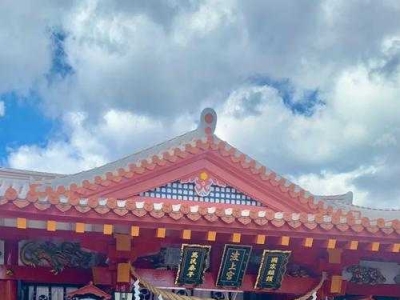 The magic and beauty of Okinawa's Naminoue Shrine, the first of the eight major shrines
1203 Read
The magic and beauty of Okinawa's Naminoue Shrine, the first of the eight major shrines
1203 Read
 Kokusai-dori Ichiran Ramen set meal?. Contains ramen, meat, fungus, seaweed and egg
915 Read
Kokusai-dori Ichiran Ramen set meal?. Contains ramen, meat, fungus, seaweed and egg
915 Read
 CAFE ANNON --The huge and delicious soufflé waffles are here
651 Read
CAFE ANNON --The huge and delicious soufflé waffles are here
651 Read
 Japan Osaka Royal Water Shake SPA Milk Bubble Bath, Shoulder, Cervical and Waist Massage
504 Read
Japan Osaka Royal Water Shake SPA Milk Bubble Bath, Shoulder, Cervical and Waist Massage
504 Read
 Android APP
Android APP IOS APP
IOS APP